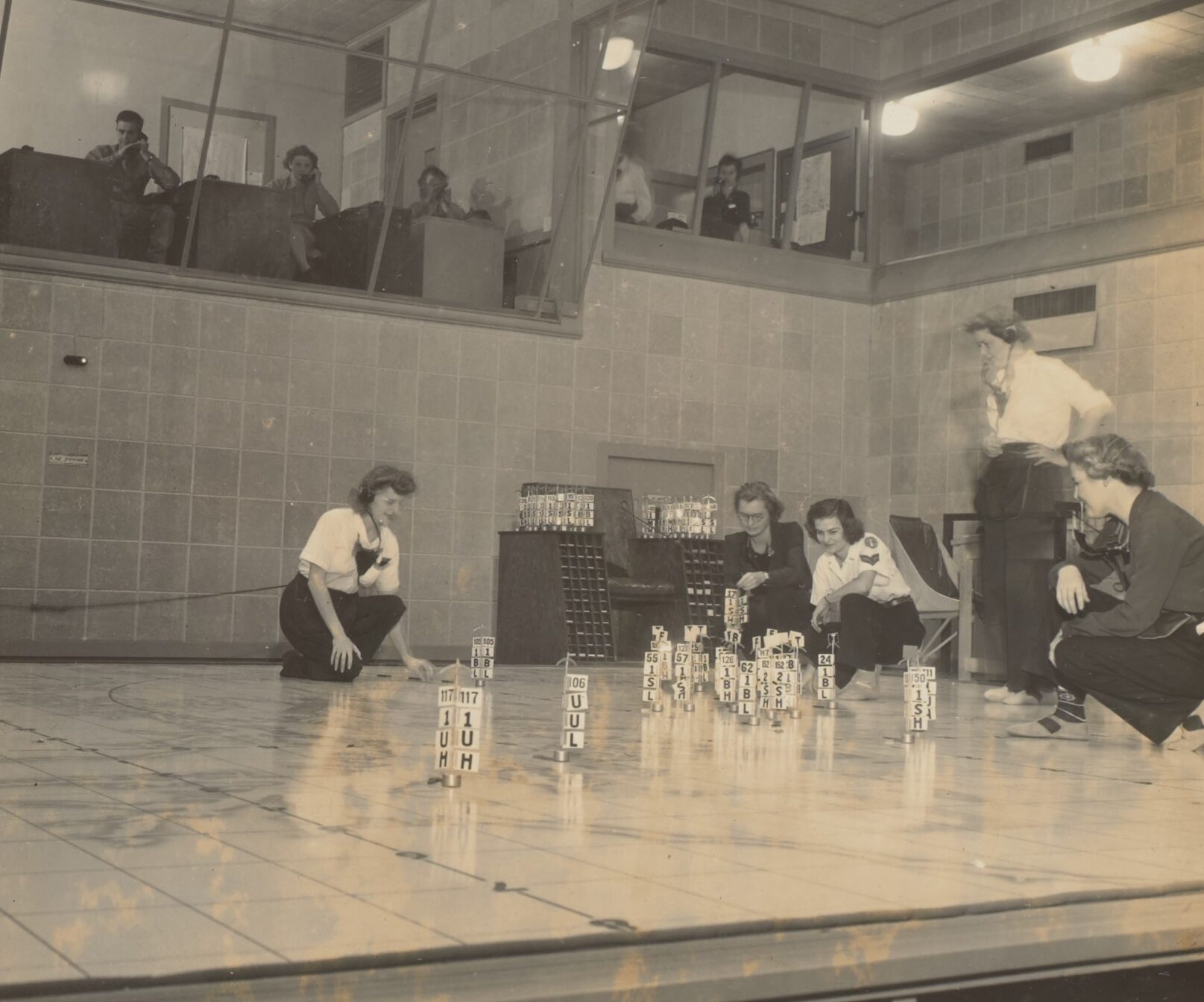Other Media: Click for my peer-reviewed article, public talk, or conference poster.
On the US home front during WWII, a select group of women used a special aerial viewing technology to help protect their cities and regions from aerial attack. These women were “plane plotters” who volunteered for the bi-coastal Aircraft Warning Service (AWS), or at affiliated organizations in certain cities. In Washington, D.C., the affiliated group worked at the Army Coast Artillery’s Antiaircraft Command Center and were called Antiaircraft Volunteers (AAVs). They were civilian volunteers and Women’s Army (Auxiliary) Corps (WAAC) members; both were a crucial part of the integrated air defense system that was based closely on the British Dowding System to protect the coasts from aerial attack.*

A plotter at work on a WWII filter board. Original image credit: Army Signal Corps for the Office of War Information, Courtesy of the James Goode WWII Collection, DC History Center.
The AWS also trained volunteer “plane spotters” in the Ground Observer Corps** to watch for, identify, and telephone reports of planes overhead to local Filter Centers. At these centers, female plotters received the observers’ telephone reports and plotted the planes’ locations on a large board that showed a map of the airspace. The women created real-time visualizations of air traffic overhead and weeded out duplicate or incorrect reports. Work at plotting centers meant learning to see the airspace over familiar cities in a new, aerial way demarcated by a global grid. Both spotters and plotters participated in what I call a broader “aerial visual culture of defense” on the home front.
Next, plotters relayed their flight data to a regional Information Center where it was plotted again with data from other Filter Centers and seaward-facing radar in the region. Military officers sat above the plotters in a balcony where they gauged threat levels, ready to activate defenses and alert local air raid wardens at any moment.

Washington, D.C.’s AAVs plot aircraft on a large Operations Board as other volunteers and Army officers watch from above. Image: Arthur E. Scott Collection, George Mason University Special Collections.
Plane plotting work is not well understood by WWII home front, women’s history, or visual culture scholars. I argue that these volunteer and WAAC women should be remembered as skilled data visualization technicians who created dynamic aerial views. Their work mattered because they located lost or crashed planes quickly, helped keep civilian morale up, and played an important role in training pilots and antiaircraft artillery soldiers prior to overseas deployment. I also ask: what gender dynamics were at play in the centers, how did plotting come to be “women’s work,” what women had the time and resources to volunteer, and how were these volunteer positions limited by race or class?
Do you have any information about WWII plane plotters? Did your mother or grandmother do this work, and share her story? I’d love to connect!
*On women in the Dowding System, see Sarah-Louise Miller, The Women Behind the Few: the Women’s Auxiliary Air Force and British Intelligence during the Second World War (London: Biteback Publishing, 2023).
**The WWII Aircraft Warning Service plane plotting system laid the groundwork for a later Cold War organization, dubbed “Operation Skywatch.” Historian Deb Fuller has done excellent work on that organization and runs a blog on the topic.